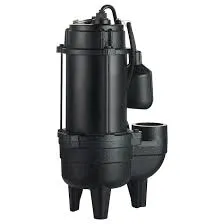English
- Afrikaans
- Albanian
- Amharic
- Arabic
- Armenian
- Azerbaijani
- Basque
- Belarusian
- Bengali
- Bosnian
- Bulgarian
- Catalan
- Cebuano
- Corsican
- Croatian
- Czech
- Danish
- Dutch
- English
- Esperanto
- Estonian
- Finnish
- French
- Frisian
- Galician
- Georgian
- German
- Greek
- Gujarati
- Haitian Creole
- hausa
- hawaiian
- Hebrew
- Hindi
- Miao
- Hungarian
- Icelandic
- igbo
- Indonesian
- irish
- Italian
- Japanese
- Javanese
- Kannada
- kazakh
- Khmer
- Rwandese
- Korean
- Kurdish
- Kyrgyz
- Lao
- Latin
- Latvian
- Lithuanian
- Luxembourgish
- Macedonian
- Malgashi
- Malay
- Malayalam
- Maltese
- Maori
- Marathi
- Mongolian
- Myanmar
- Nepali
- Norwegian
- Norwegian
- Occitan
- Pashto
- Persian
- Polish
- Portuguese
- Punjabi
- Romanian
- Russian
- Samoan
- Scottish Gaelic
- Serbian
- Sesotho
- Shona
- Sindhi
- Sinhala
- Slovak
- Slovenian
- Somali
- Spanish
- Sundanese
- Swahili
- Swedish
- Tagalog
- Tajik
- Tamil
- Tatar
- Telugu
- Thai
- Turkish
- Turkmen
- Ukrainian
- Urdu
- Uighur
- Uzbek
- Vietnamese
- Welsh
- Bantu
- Yiddish
- Yoruba
- Zulu
Telephone: +86 13120555503
Email: frank@cypump.com
Nov . 24, 2024 23:53 Back to list
Understanding the Importance of Sump Pumps in Sewage Management Systems
Understanding Sump Pumps and Sewage Systems
Sump pumps are essential components in many residential and commercial drainage systems. They play a critical role in managing excess water and preventing flooding in basements and other low-lying areas. Understanding how sump pumps work, particularly in relation to sewage, can help homeowners make informed decisions about their drainage needs and maintenance.
What is a Sump Pump?
A sump pump is a device installed in the lowest part of a basement or crawlspace. It is designed to remove accumulated water that collects in a sump basin—typically a pit dug in the ground. The most common types of sump pumps are submersible and pedestal pumps. Submersible pumps are submerged in water, while pedestal pumps stand above the sump pit and use a long shaft to reach down into the water.
The Role of Sump Pumps in Sewage Management
While sump pumps are primarily used for dewatering, those specifically designed for sewage handling, known as sewage sump pumps or sewage pumps, play a vital role in sewage systems. These pumps help transport wastewater from lower areas to higher elevations where it can flow into the municipal sewer line or a septic system. This is particularly important in homes situated in regions with poor drainage or where gravity alone cannot facilitate waste disposal.
How Sump Pumps Work
When water accumulates in the sump pit, a float switch activates the pump. This mechanism is similar to that of a toilet’s flushing system. As the water level rises, the float rises with it, eventually triggering the pump to turn on. The pump then works to move the water out of the sump pit through a discharge pipe, which leads it away from the home's foundation. For sewage pumps, the process is similar, but they are equipped with additional features to handle solid waste materials.
Maintenance of Sump Pumps
sump pump sewage

Regular maintenance of sump pumps is crucial for ensuring their reliable operation, particularly before periods of heavy rainfall or after significant storms. Homeowners should inspect the pump regularly, checking the power supply, testing the float mechanism, and ensuring that the discharge pipe is clear of debris. Additionally, cleaning the sump pit of any silt or sediment can prevent clogs and enhance the pump’s efficiency.
Signs of Sump Pump Failure
Being aware of the signs of sump pump failure can save homeowners from extensive water damage. Common indications include
1. Unusual Noises If the pump is making strange sounds, it may indicate mechanical issues that need attention. 2. Frequent Cycling If the pump is turning on and off frequently, it could indicate problems with the float switch or a malfunctioning mechanism. 3. Water Accumulation Presence of water in the basement, even with a functioning pump, signals a potential failure. 4. Burnt Smell A burnt smell can indicate an electrical issue or an overheated motor.
Choosing the Right Sump Pump
When selecting a sump pump, homeowners need to consider their specific needs. Factors such as the size of the sump pit, the volume of water typically collected, and the type of waste (whether it's just water or includes sewage) play a pivotal role in determining the right pump for a property. For homes with sewage considerations, opting for a sewage pump is advisable, as these are built to handle solids while preventing clogs.
Conclusion
In summary, sump pumps are integral to effectively managing water and sewage in residential and commercial properties. With proper maintenance and an understanding of their functionality, homeowners can ensure these systems operate efficiently, protecting their property from water damage and maintaining a clean and healthy environment. As weather patterns continue to fluctuate, having a reliable sump and sewage pump system has never been more important.
-
Horizontal Split Case Pump with GPT-4 Turbo | High Efficiency
NewsAug.01,2025
-
ISG Series Pipeline Pump - Chi Yuan Pumps | High Efficiency, Durable Design
NewsAug.01,2025
-
Advanced Flue Gas Desulfurization Pump with GPT-4 Turbo | Durable & Efficient
NewsJul.31,2025
-
ISG Series Vertical Pipeline Pump - Chi Yuan Pumps | Advanced Hydraulic Design&Durable Construction
NewsJul.31,2025
-
ISG Series Vertical Pipeline Pump - Chi Yuan Pumps | Energy Efficient & Low Noise
NewsJul.31,2025
-
pipeline pump - Chi Yuan Pumps Co., LTD.|High Efficiency&Low Noise
NewsJul.31,2025










